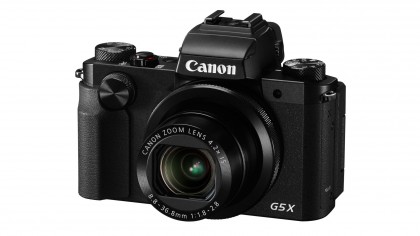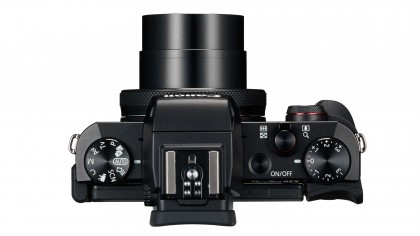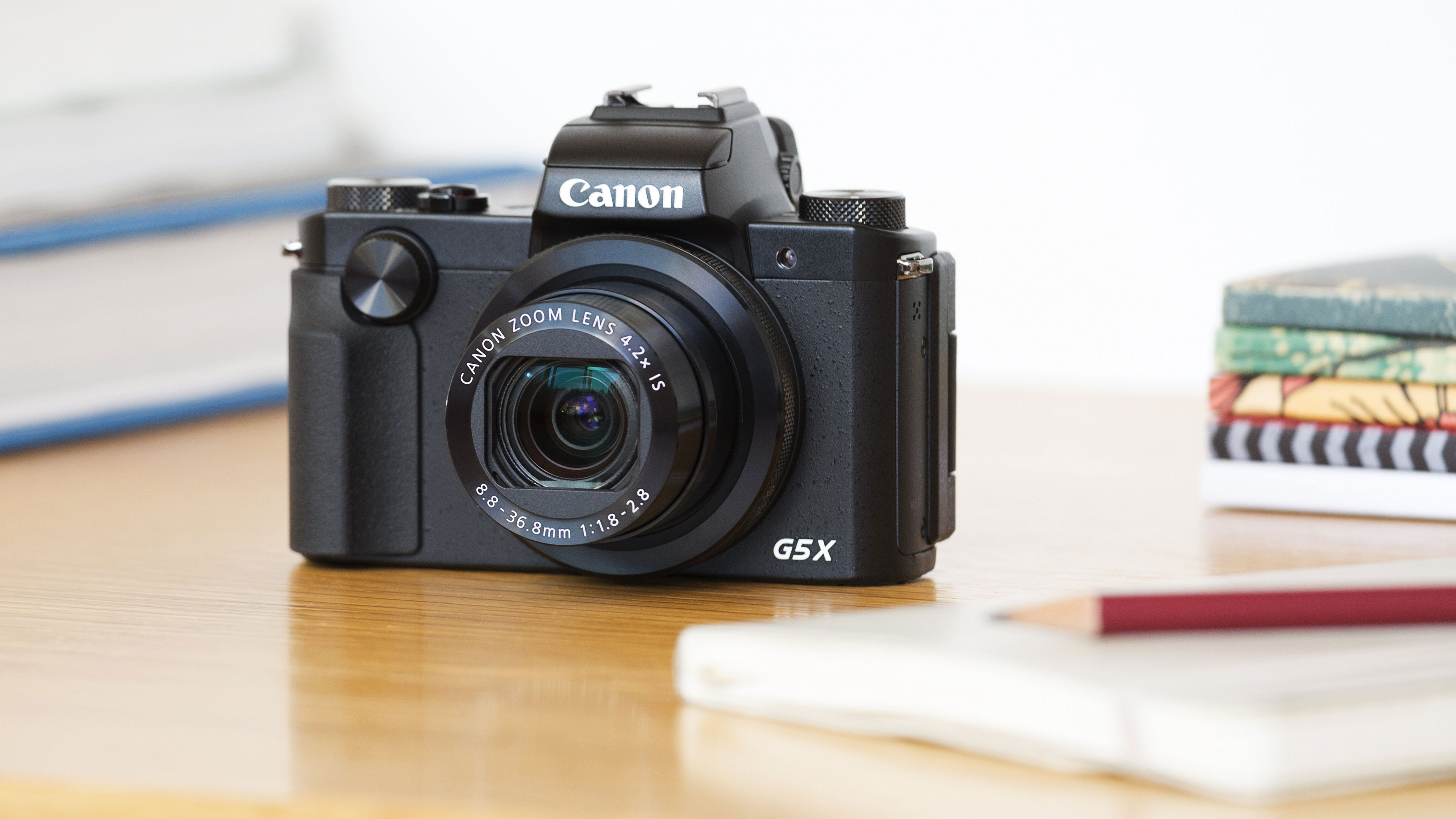Why you can trust TechRadar
Unlike the G9 X, or even the G7 X, the G5 X is just a little too big to slip neatly into a jeans pocket. However, it will probably fit in the average jacket pocket which still makes it a good option for your everyday camera, or travel compact.
The styling is pretty old school and retro, with an angular design that probably won't be to everybody's taste. On the whole I like it though, mainly because all of the dials and buttons feel sensibly arranged and within easy reach of my fingertips.

Sitting in the middle of the top plate is the G5X's electronic viewfinder. This placement gives it an almost miniature DSLR look about it, or perhaps closer to the Sony's A7-series compact system cameras.
Pushing the retro theme even further is the control dial around the lens. This can adjust a number of different settings which you can customise from within the main menu. Some may like to use it to control aperture, for instance.
There's also a dedicated exposure compensation dial on the top of the camera, which is easy to reach with your thumb and is quicker to use than fiddling with a combination of buttons and dials on the back of the camera – as is often the case with compact cameras.
Just below the shutter release, within reach of your forefinger (or middle finger if you want to keep your forefinger on the shutter release) is another smaller dial. This again can be customised for different settings, such as aperture, ISO (sensitivity) or white balance. I used it for aperture adjustment as I would with a Canon DSLR.
Once you have the controls set up how you like them they allow quick and fluid settings changes. Your forefinger rests on the shutter release, while you can use your thumb to alter exposure compensation, your middle finger to set aperture (or shutter speed), and your other hand to set ISO (sensitivity). That's just an example – you can change two of those dials around to a different way of working if you prefer.
The back of the camera has a good combination of buttons and dials that you can use in conjunction with the articulating, touch-sensitive screen – but if you don't like using touchscreens, the good news is you don't have to because you can make changes with the physical controls too.

There's both a physical and an on-screen Q button which brings up a range of options which you're likely to want to change often, such as white balance, sensitivity, image quality, metering and so on. You can move around this menu using the directional keys on the back of the camera, or you can simply tap the option you want to use on-screen. The screen itself is very responsive and moving your way through menus like this feels very natural, especially if you're used to using a smartphone.
That's not to say that there aren't times when the physical buttons aren't appreciated. When you're using the viewfinder, you can't set the AF point using the screen as you can with Panasonic (and some Olympus) cameras. Instead, there's an AF point set button on the back of the camera, which you use in conjunction with the directional keys to move to the point you need.
One slight whinge here is that the video record button, being on the thumb rest, is prone to the occasional unwanted press if you're not careful. It's not something I found happening every time I picked up the camera, but enough to warrant a mention here.
Having a fully articulating screen is great and much more useful than just a tilting screen as you can move into vertical (portrait format) positions as well as horizontal (landscape) positions. You can also move it to face the front if selfies are your thing.
A viewfinder is also very useful when there's bright sunlight or if you just happen to prefer composing your images in a traditional manner. The sensor which automatically switches the screen off and the viewfinder on makes for a seamless transition, and the viewfinder itself is large enough to merit being used frequently. One of the G5 X's rivals, the Sony RX100 III/IV's, has a pop-up viewfinder which can be pushed back into the camera when it's not in use to make the camera more pocketable. The G5 X viewfinder is fixed in place, though this does at least mean it's always ready for use.
Amy has been writing about cameras, photography and associated tech since 2009. Amy was once part of the photography testing team for Future Publishing working across TechRadar, Digital Camera, PhotoPlus, N Photo and Photography Week. For her photography, she has won awards and has been exhibited. She often partakes in unusual projects - including one intense year where she used a different camera every single day. Amy is currently the Features Editor at Amateur Photographer magazine, and in her increasingly little spare time works across a number of high-profile publications including Wired, Stuff, Digital Camera World, Expert Reviews, and just a little off-tangent, PetsRadar.

